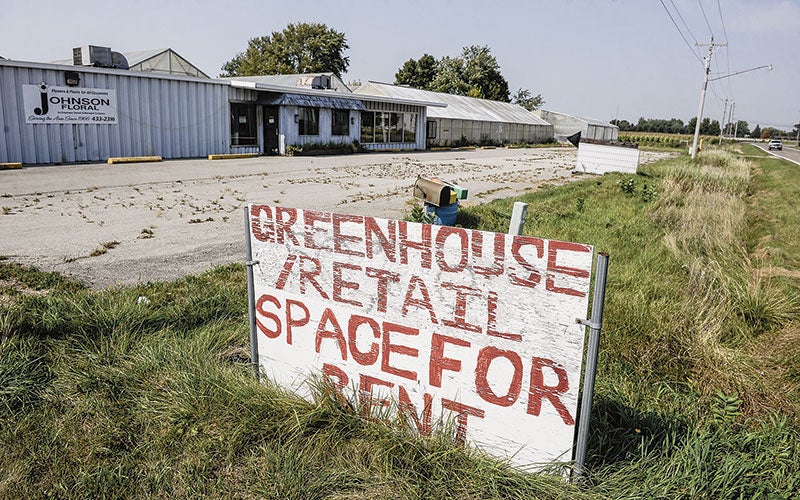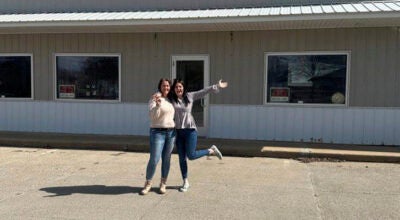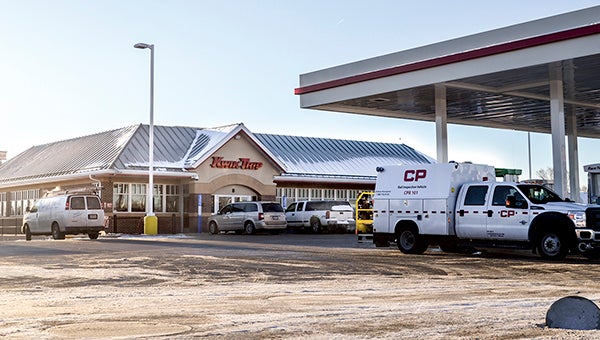Johnson Floral building declared a hazard; Owner says he wants to work out issues with the city
Published 8:21 am Friday, September 15, 2017

- An old sign outside of Johnson Floral announces space for rent, however, the city of Austin has label the property as a hazardous structure. Photos by Eric Johnson/photodesk@austindailyherald.com
The Johnson Floral building at 400 31st St. SW is the fourth structure this year that the Austin City Council has declared hazardous.
Councilman David Hagen received several complaints about the structure, he said.
The building, which closed in 2013 and has been up for sale since, has deteriorated over time, as have the green houses on the property.
Since then, there have been several incidents of people trespassing and breaking into the property.
The city sent letters to the owner about the issues with the structure. In one dated June 21, Zoning Inspector Tim Donovan listed the following issues in need of attention:
• Remove junk from the property
• Secure the building
• Remove graffiti
• Remove all overgrowth
• Repair greenhouses or remove structures
• Repair siding on main building

The several greenhouses of Johnson Floral sit unused. The city has declared the property has a hazardous structure.
Austin Zoning and Planning Administrator Holly Wallace said the property owner made minimal progress after receiving the letters.
“We were not happy with the progress that was being made, so we brought the resolution as a hazardous structure so we could potentially remove or repair it if the property owner didn’t take any action,” she said.
Wallace said the property owner contacted both her and the city administrator after the hazardous structure resolution passed at the council’s Sept. 5 meeting.
“(The property owner) said he wanted to work with the city in getting the property cleaned up,” she said.
“It is my understating he has an agreement with some people who want to come and repurpose the greenhouses and remove things from that site. We said we’d give him a couple of months to get that done. He seemed very agreeable to taking care of the problem.”
Because the owner has shown a willingness to take care of the problem, Wallace said the city would hang onto the resolution as opposed to sending it to the city attorney.
“Normally, we would take the resolution to the city attorney and they would draft a petition, which we would serve on the property owner,” she said. “That starts the court action. I don’t think we will need a court action on this.”
Wallace said that in this instance, the structure is not an immediate health hazard. The city wants to make sure the property is secured and that police are aware that there has been trespassing on the property.
Wallace said that compliance from the owner is critical to helping the city save money.
“If we can get the property owner to take responsibility and take it down, then it saves us money for something else,” she said.





